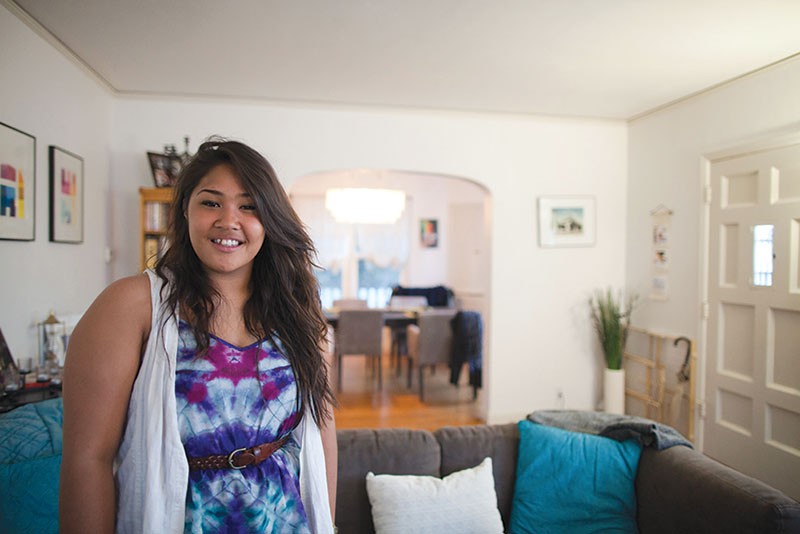A neighborhood battle over a center for homeless youth in Santa Rosa continues to raise accusations of both NIMBY-ism on one side and distorted facts on the other.
The Dream Center, a proposed development in Bennett Valley by the nonprofit Social Advocates for Youth (SAY), would provide short- and long-term affordable housing units for youth between the ages of 18 and 24, a contingent that’s grown steadily. SAY’s annual homeless youth count in 2009 found 268 people between the ages of 12 and 24 living on the streets; in 2013, that number is 1,128.
After discovering that the 38,000-square-foot former Warrack Hospital had sat empty since 2008, SAY’s executive director Matt Martin approached Sutter about taking over the building. Sutter agreed, and SAY proposed the Dream Center, a full-service facility with administrative offices, job training and employment counseling, healthcare services and on-site housing.
SAY cites the success of Tamayo Village, an existing 25-unit development down the road, as a model for the future center. But Community Unite, a coalition of Bennett Valley residents, began raising opposition at planning meetings in the spring, citing safety concerns and accusing SAY of misrepresenting the facts.
“There are issues with Tamayo Village, which is the benchmark for this facility,” says Brenda Chatelain, a homeowner who lives within 300 yards of the Warrack Hospital site. “We can confirm that Tamayo has had sex offenders, gang members and violent felons.”
Chatelain charges that SAY has not been forthcoming about the criminal element at Tamayo Village. She cites a September 2013 letter, “written on behalf of 12 Sonoma County deputy probation officers,” which asserts that gang members, sex offenders and violent felons have all been either supervised, seen at or housed in Tamayo Village.
Out of 25 Tamayo Village residents, one is currently on probation, says SAY communications manager Caitlin Childs. SAY works in partnership with the probation department to “ensure our youths’ joint success,” she adds via email, but clarifies that youth are not “sent” to live at Tamayo Village and that it isn’t a halfway house, as some have portrayed. Likewise, residents of the Dream Center would not be sent by the courts, but would voluntarily apply in an open-application process.
But Chatelain and others from Community Unite say they’re concerned about whether staff will be adequately trained, as well as the scope of the proposed Dream Center, which could contain as many as 63 units for homeless youth. “It’s pretty well known that the optimum environment for people transitioning out of probation, foster care or homelessness, where they really thrive, is six to 10 people,” Chatelain says.
After soliciting the neighborhood for feedback on the project in November 2012 and looking at models of already successful affordable housing in the county, such as Burbank Housing, the ambition to build a 100-unit facility was scaled down.
“We got a lot of feedback from neighbors that said it felt to big,” says SAY director of development Cat Cvengros. The current plan proposes 40 units of affordable housing for the first year. If successful, 14 units would be added over the next two years, capping at a maximum of 63 units. Potential residents would be subject to a criminal background check, a sex-offender check and a lease agreement. The facility will also offer 10 free, short-term housing slots of up to three months for residents that have been pre-drug- and alcohol-screened.
Courtney Lavelle, 22, has been an onsite facility manager at Tamayo Village for the past year. “Have you sat down and had a conversation with them?” Lavelle says. “They’re regular kids that go to high school, go to the JC. They’re regular kids who’ve had hardships in their lives. They’re beautiful creatures, in my opinion.”
Concerns raised by Bennett Valley neighbors have helped logistically, Cvengros says. “Out of it has come a lot of positive feedback to make this a place that will meet the youth’s needs and the needs of the neighborhood. The more people involved, the better the Dream Center will be.”
Meanwhile, Community Unite, according to Chatelain, demands a neutral, third-party socioeconomic impact report before any further decisions are made.
“It’s easy to be reflexive and say they’re about helping kids,” says Chatelain. “When you drill down, things are seldom black-and-white. It’s incumbent upon Bennett Valley residents to do due diligence. A neutral, third-party study is the only way to do it, because I believe there is an agenda in place that doesn’t necessarily serve anyone well.”
The application for the Dream Center is scheduled to go before the planning commission in early 2014, and then to the Santa Rosa City Council, where it will again be open to public comment.











